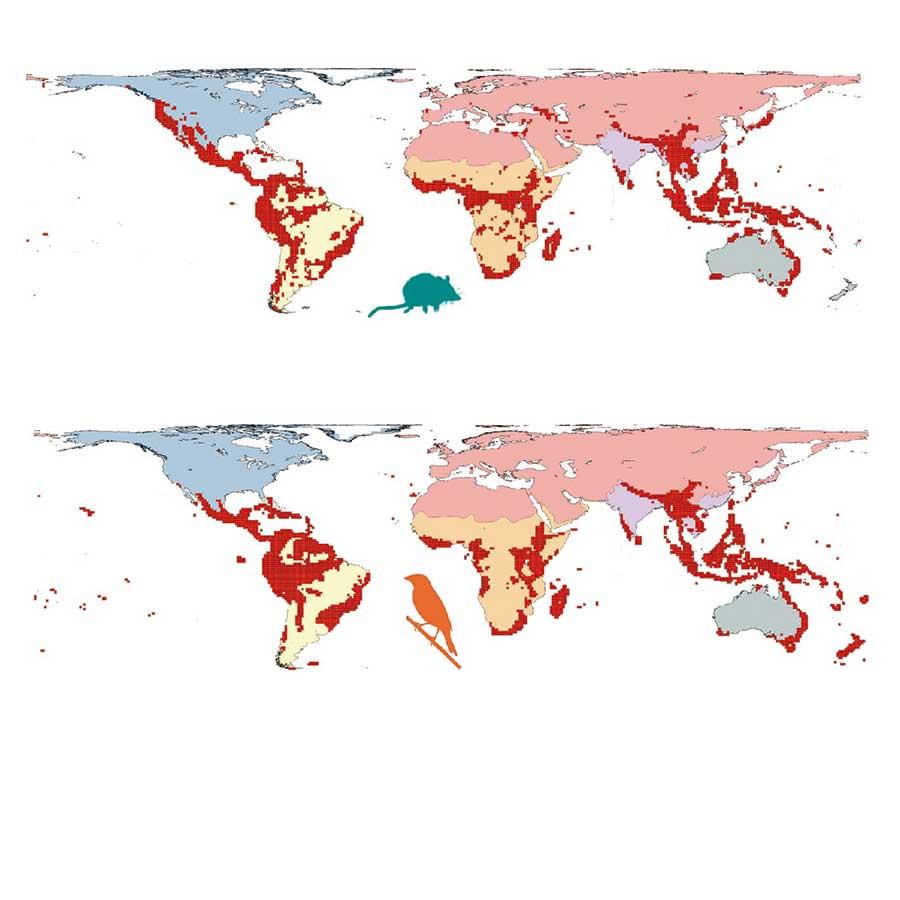
Submitted by Administrator on Wed, 13/02/2019 - 09:07
Biodiversity hotspots only encompass 20% of the Earth’s surface but hold more than 50% of all vertebrate species. Why are these places so diverse? To answer this question, Javier Igea and Andrew Tanentzap analysed data from over 5000 and 11000 species of mammals and birds, respectively. The results, published in Science Advances, show that hotspots followed different routes to high diversity depending on their location. Hotspots in tropical regions were characterised by increased rates of speciation in the last 25 million years compared to their surroundings. By contrast, hotspots in temperate zones were shaped by higher rates of migration from their surroundings. Environmental differences between hotspots and their surrounding areas, such as greater topographic and habitat complexity, could explain how their extraordinary diversity was generated and maintained through time. The results also underscore the need to protect these biodiversity hotspots in the context of global change and habitat loss. Igea and Tanentzap now plan to apply the approach they have developed onto the much greater diversity of >300,000 flowering plants distributed so unevenly across the planet.
Igea J, Tanentzap AJ. (2019) Multiple macroevolutionary routes to becoming a biodiversity hotspot. Science Advances.
